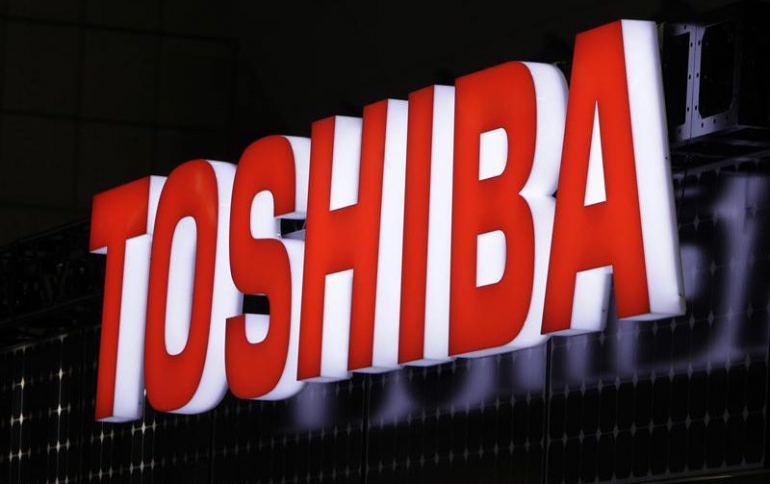
Toshiba Announces "Next Plan", Seeks Early Retirement For 1,400
Toshiba plans to sell off foreign subsidiaries and encourage around 1,400 employees to take early retirement as part of a new five-year business plan announced tooday.
The company announced the "Toshiba Next Plan" as a five-year transformation plan
made necessary by Toshiba's decision to spin off its highly lucrative semiconductor business to dig itself out of a financial morass from massive losses stemming from its failed nuclear power operations in the United States.
Toshiba will implement measures to improve core earning power, and will also secure investments for growth. At the end of fiscal year 2021, Toshiba aims to generate sales of 3.7 trillion yen, an ROS of over 6% and an ROE of over 10%. At the end of the plan’s 5-year timeframe, the targets are set at sales of 4 trillion yen, an ROS of 10% and an ROE of 15%.
Toshiba will deploy four reforms to improve core earning power. Through structural reform, Toshiba will exit non-focus businesses, withdrawing from the liquid natural gas (LNG) business and the nuclear power plant business in the UK. Toshiba will also optimize its work force, reorganize its production bases and reduce the number of subsidiaries.
To reform procurement, Toshiba will apply various measures to lower its cost rate.Reforms of sales activities will improve overall efficiency while strengthening the sales force. Under the new business plan, about 7,000 Toshiba group company employees, or 5 percent of the workforce, will be cut. While most will come in the form of natural attrition as workers reach mandatory retirement age, there are also plans to implement an early retirement program at subsidiaries in the energy equipment and digital-related equipment sectors.
Toshiba said that investments will be made to renew IT infrastructure and to change numerous processes throughout the organization toward improving operational efficiencies. Additionally, Toshiba has planned capital expenditure of approximately 810 billion yen and R&D investments of approximately 930 billion yen to grow new businesses, improve profit margins and generate future cash flows.
The company hopes to shift the base of its profit centers to social infrastructure projects, such as non-nuclear power plants and building equipment.
One area of interest is the use of artificial intelligence and information technology for inspections and repairs.
Toshiba sees mega-trends and disruptive innovation as opportunities for growth, where it can bring together its unique technologies and resources. In lithium-ion rechargeable batteries, Toshiba will promote growth in markets where the SCiB can demonstrate its distinctive features. In power electronics, Toshiba will leverage its strengths in semiconductor technology, and will secure a competitive advantage with differentiated products in the mobility and infrastructure system markets. In precision medicine, Toshiba will use leading edge technologies in the life-science field to achieve very early cancer detection and optimized individual treatment.
Toshiba will also build a standardized IoT architecture that can support Toshiba’s
knowledge in diverse business fields and intends to make this open and available
to business partners.
Although Toshiba Memory, the semiconductor subsidiary, had accounted for about 90 percent of Toshiba's operating profits, the parent company was forced to sell it off to cover the huge losses from its failed nuclear power plant business in the United States.





















